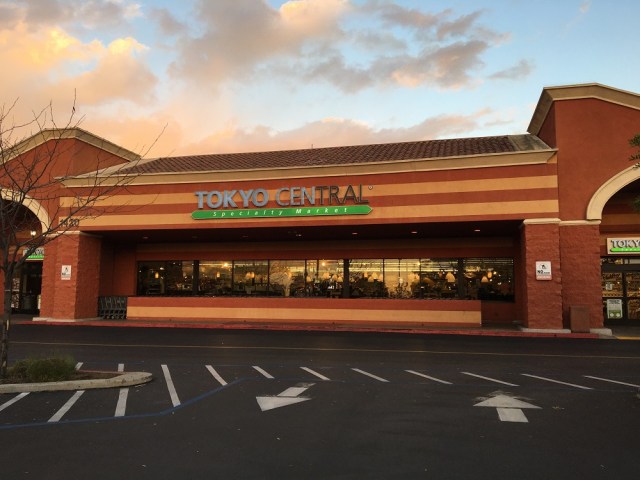
Looking for a taste of home-away-from-home while back home.
Growing up in sunny southern California didn’t do much to condition me against the cold of a Japanese winter, so when there’s an opportunity to head back to my hometown at this time of year, I’m grateful for it. One downside to being in the Golden State instead of the Land of the Rising Sun, though, is the risk of missing out on Japan’s custom of eating ehomaki for Setsubun.
To recap, Setsubun, celebrated on February 3, was the final day of winter according to Japanese folklore. In order to secure prosperity for yourself and your family in the coming year, one of the rituals you’re supposed to engage in is eating an ehomaki, a huge, luxurious sushi roll.
In Japan, ehomaki can be easily found at specialty shops, supermarkets, and even convenience stores in the runup to Setsubun, so I’ve been able to perform the solemn duty of eating sushi in order to secure my household’s happiness with pretty solid regularity. Being in the U.S. for Setsubun this year, though, I was worried about what sorts of calamities might befall me in the year to come if I failed to observe the culinary custom, and so I went searching for ehomaki in America.
Thankfully, the Los Angeles area has a small chain of Japanese specialty grocery stores called Tokyo Central, which began under the name Marukai and is now affiliated with Don Quijote, the Japanese megastore that sells pretty much everything.
▼ Tokyo Central even follows Don Quijote’s hand-lettered-sign aesthetics, and you’ll see Donpen, the Don Quijote mascot character penguin, here and there throughout the store.
Similar to grocery stores in Japan, Tokyo Central has a large section for “delica,” or pre-prepared dishes. That includes rice bowls, bento, Japanese-style noodles, and even pasta and sandwiches. This being the U.S., though, the clientele at a Japanese food-oriented market is especially interested in sushi, so Tokyo Central’s delica corner all-stars are the packs of nigiri sushi and sushi rolls. Some of the rolls are Americanized standards like spicy tuna or crunch rolls, but they have more authentically Japanese varieties too.
When I stopped by, it was February 2, technically still one day before Setsubun, but there they were: ehomaki!
▼ 恵方巻 = ehomaki
For the uninitiated, they were also labeled as “lucky rolls,” but there was also an English-alphabet rendering of “eho maki,” making this not just a meal, but a mini language lesson too. Most importantly, the rolls were left uncut, since you’re supposed to grab the ehomaki with both hands while biting into it to properly perform the prosperity ritual.
There were also seafood ehomaki and an ehomaki “combo,” but in the end I opted for the standard ehomaki. At US$7.99, it felt like a pretty good deal, considering that there’s always been a premium for premade sushi in the U.S., even before the country’s currently rapidly rising consumer prices.
So what makes an ehomaki an ehomaki? There’s no set specification, but an ehomaki needs to be stuffed with both a large number and a large quantity of fillings, since the whole idea is that eating something hearty and luxurious on the last day of winter will set the tone for an entire year of bold happiness.
Tokyo Central’s ehomaki had nice big pieces of kanikama (imitation crab), tamagoyaki (egg), and cucumber, plus a lot of kampyo (stewed gourd).
When eating your ehomaki, it’s critical to do so while facing in the correct direction. The direction changes from year-to-year, but for this year it was east-northeast, so after checking the compass and lining up the sushi roll…
…it was time to dig in!
So how was this bite of Japanese culture taken in the U.S.? Honestly pretty good! One of the biggest differences foodies notice between eating sushi in Japan and overseas is the quality of the rice. Outside of Japan, sushi rice often has either too little vinegar or not enough, and the grains are often either dry and crumbly or mashed and mushed together. Tokyo Central’s ehomaki had none of those problems, though, with just the right flavor and consistency to the rice. The other ingredients were all high-quality too, on par with what you’d expect from a supermarket-bought sushi roll ehomaki with these fillings in Japan.
If I’m being picky, I could have gone for a bit more luxury in the fillings, maybe a nice thick slice of tuna for an extra burst of flavorful protein. All in all, though, this definitely did the job of providing an ehomaki experience in America, and it’s nice to know I didn’t miss my chance to get this year’s does of Setsubun sushi good luck.
Related: Tokyo Central location list
Photos ©SoraNews24
● Want to hear about SoraNews24’s latest articles as soon as they’re published? Follow us on Facebook and Twitter!
Follow Casey on Twitter as he continues to try to bring Japan and America together through food.